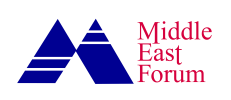The Arab Spring began with desperation—economic stagnation, unemployment, and a lack of opportunity igniting unrest across North Africa. More than a decade later, the same conditions linger in many countries from Tunisia to Libya. But today, a new factor is entering the equation: tariffs.
President Trump’s sweeping trade tariffs, based on a recalibrated formula that targets trade imbalances, are often criticized abroad. Yet for North Africa, these tariffs may do more good than harm. They offer the kind of jolt that fragile economies need—not to collapse, but to evolve. They may be precisely what prevents another spiral into instability.
For North Africa, Trump’s trade tariffs offer the kind of jolt that fragile economies need—not to collapse, but to evolve. They may be precisely what prevents another spiral into instability.
While some governments in the region have decried the tariffs as unfair, they are in fact a well-calculated move. The formula doesn’t punish arbitrarily—it reflects real trade surpluses with the US and demands accountability. Countries like Algeria, Tunisia, and Libya are now confronted with a clear economic signal: the current model of narrow exports and heavy reliance on external demand is no longer sustainable. But this isn’t a threat; it’s a wake-up call.
The structure of these tariffs doesn’t touch oil and gas, which protects core revenue streams for Algeria and Libya. This means there is no risk of immediate fiscal collapse. At the same time, tariffs on non-oil goods push these governments to develop alternative sectors—manufacturing, tech, agriculture—that have long been neglected. This shift is not optional for long-term survival. The longer these economies delay diversification, the more exposed they remain to global shocks, and the more restless their populations become.
In Tunisia, for instance, the imbalance is clear: over a billion dollars of exports, much of it low-margin, with a trade surplus that triggered higher tariffs. The effect will be sharp—but not devastating. It will force industries and ministries to reconsider how to add value, how to scale, and how to compete on quality rather than cost alone. For a country battling youth unemployment and rising disillusionment, this is the type of productive pressure that can generate real jobs and sustainable growth. Without it, economic inertia would continue—and with it, the slow slide back toward discontent.
More importantly, Trump’s tariff logic reveals which countries are ready for modern trade—and which are not. Jordan, despite having a free trade agreement, still faced tariffs because its exports outpace imports dramatically. The tariffs expose this gap and demand a correction—not through retaliation, but through reform. This mirrors the challenge across North Africa: how to build balanced economies that don’t just sell, but buy, produce, and innovate.
The first Arab Spring spread through countries that lacked economic resilience. Their people knew their leaders were coasting on resource wealth, tourism, or cheap labor. When those pillars collapsed, nothing was left. What the Trump tariffs demand—balance, competitiveness, reciprocity—are the exact ingredients these societies have needed for years. Tariffs might hit soft spots, but they hit the right ones.
The Trump tariffs push these countries to stand on their own economically, reducing dependency on aid, volatile commodity cycles, or unstable partnerships.
For policymakers watching North Africa, this moment is an inflection point. They can interpret the tariffs as an economic hardship, or as a necessary correction. The latter interpretation is more accurate, and more promising. These new trade terms expose inefficiencies, highlight the dangers of relying on single-resource economies, and incentivize strategic investment in the private sector.
There is also a deeper geopolitical layer. North Africa is not a vacuum—it is a neighborhood prone to external interference, migration waves, and sudden conflict. A prosperous, balanced North African region is not just good for trade; it is good for regional stability. The Trump tariffs push these countries to stand on their own economically, reducing dependency on aid, volatile commodity cycles, or unstable partnerships. Economic independence is a bulwark against populism and unrest.
Some may argue the tariffs could stir new protests by increasing costs or disrupting trade. But the opposite is more likely. A trade regime that rewards reciprocal, balanced flows encourages domestic production and import substitution. Over time, this fosters industries that are more insulated from external shocks. The root causes of unrest—joblessness, inequality, and dependency—can only be solved by internal economic reform. The tariffs push hard in that direction.
There is also the signal these tariffs send: the era of free access to lucrative markets without balance is over. That is not a threat to North Africa—it is a challenge. And in this challenge lies the opportunity for long-term social stability. Governments that respond wisely will invest in skills, infrastructure, and industries that meet domestic demand and export globally—not just to the US, but to Europe, Asia, and Africa.
Governments that respond wisely will invest in skills, infrastructure, and industries that meet domestic demand and export globally—not just to the US, but to Europe, Asia, and Africa.
The biggest threat to North African countries is not Trump’s tariffs—it is the status quo. It is a dependence on oil, on remittances, on fragile tourism sectors, and on narrow trade baskets vulnerable to collapse. The tariffs make clear that survival in the next decade requires economic adaptation. And history shows: nothing prompts reform better than clear consequences.
Some countries, like Morocco and Egypt, have already begun this transition. Their lower tariff rates reflect more balanced trade and diversified partnerships. They are proof that recalibrated economies don’t just avoid penalties—they thrive. Others, like Tunisia or Libya, are being given a direct incentive to follow the same path. Far from being left behind, they are being invited to evolve.
In the long run, Trump’s tariffs could become a stabilizing force in North Africa—not through charity, but through pressure. They reward modernization, punish imbalance, and create a path for organic growth. That, more than any aid package or speech, is what these nations need to avoid the chaos of the past.








